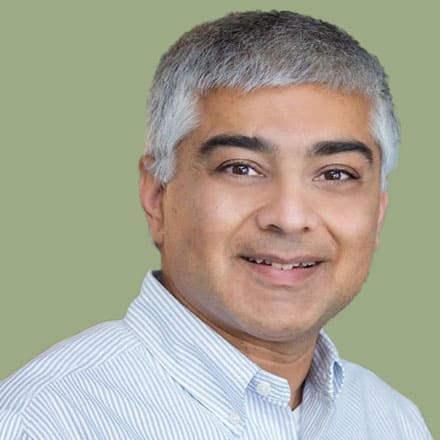Inside Angle
From 3M Health Information Systems
Three questions with Sandeep Wadhwa, MD: Social determinants of health
I sat down with 3M Health Information Systems Global Chief Medical Officer Sandeep Wadhwa, MD, MBA, to discuss social determinants of health and why finding innovative solutions isn’t just a challenge for the health care industry.
One of the biggest buzzwords in health care right now is social determinants of health (SDoH). Sandeep, you bring a unique perspective to 3M HIS through your past experience as both a provider and a technology vendor. Tell us why SDoHs are such an important component of health care.
Just to level set, SDoHs are defined by the CDC as “conditions in places where people live, learn, work and play that affect a wide range of health and quality of life risks and outcomes.” It isn’t just about a physical or mental health diagnosis or a chronic condition, it’s about all of the circumstances surrounding a person: their living situation, job and social environment.
When I was leading population health for a major health services company, we offered telephonic nursing education programs for Medicaid recipients with chronic conditions in about a dozen states. We trained the nurses to focus on educating the Medicaid client between doctor visits, specifically talking about what the medications were and what lifestyle changes the client could make to help with their conditions. Eventually we realized that many of our clients responded better to peers instead of health care professionals and many learned best from each other. So, we evolved our model to incorporate trained peers and groups to help initiate and sustain healthy lifestyles. There was a social dimension to our work that we had been missing with remote telephonic nursing and our efforts were more successful as we moved closer—physically and culturally—to the communities we served.
Can you share a specific example of an SDoH you worked to target?
Absolutely. One of the leading causes of premature death and morbidity is tobacco use. I was stunned to learn that more than 60 percent of low income children were exposed to second hand smoke. That’s a staggering percentage. It bothered me tremendously that children who were exposed to tobacco smoke show an increased rate of heart diseases, lung diseases and cancer as they grew up. As the Colorado Medicaid Director, I championed coverage of previously uncovered nicotine replacement therapies and added second-hand smoke exposure to our health scoreboard to become an accountability metric.
However, we realized that these coverage and quality improvement efforts weren’t enough; housing policy and environment policy could play a vital role in decreasing second-hand smoke exposure. We collaborated with the EPA to try new ways to reach Medicaid homes and share the EPA’s smoke-free home and smoke-free car pledges. We supported low income housing and rental initiatives promoting tobacco-free rental units to minimize tobacco smoke wafting into other units.
Another concern was the rate of obesity, specifically in low income populations. Even though Colorado is the thinnest state in the country, lower income populations had a much higher rate of obesity, particularly children in Medicaid. The team recognized that childhood obesity is a complex condition and Medicaid’s levers were limited. We could add weight (BMI) calculations to our expected preventative screening, but wanted to find other ways to impact obesity through healthy eating and increased physical activity.
We explored partnerships with local school districts to come up with innovative ways to incorporate more activity into the kids’ daily lives. One idea was to drop kids off two blocks away from the school instead of right in front of the school to get more steps. We also explored how we could encourage fast food restaurants to promote more fruits and vegetables. The Supplemental Nutrition and Assistance Program (formerly known as the food stamp program) was another area we focused on by exploring how to increase the purchasing power of for fruits and vegetables.
How can we in the health care industry, and beyond, continue to find ways to incorporate SDoHs and educate others about the importance of tracking these metrics?
We need to shift our approach to health care from a reactive one to a proactive and preventative one. I I was stunned to learn that one in four low income children have an untreated cavity—three times higher than higher income children. Cavity rates increase with poverty and efforts to combat dental caries involved not only increasing access to dental visits, but promoting fluoride varnish as well as we promoting culturally appropriate education on oral hygiene recommendations such as bottle feeding hygiene, decreasing exposure to acidic drinks and educating on the dangers of leaving bottles overnight with infants; all of which can make differences too.
While not all of the initiatives we tried were successful, it opened the door for non-traditional conversations with a variety of advocates in different industries to reduce spend and positively impact the health of our population. Cross-sector collaboration will be key to implementing innovative solutions. The solution to improving our population health outcomes isn’t going to just rest on traditional payers and providers, but industry, non-profit and cross-government partnerships that promote health by discerning appropriate SDoHs and addressing root causes.
Sandeep Wadhwa, MD, MBA, is Global Chief Medical Officer at 3M Health Information Systems.
Kelli Christman is senior marketing communications and strategic communications specialist at 3M Health Information Systems.




